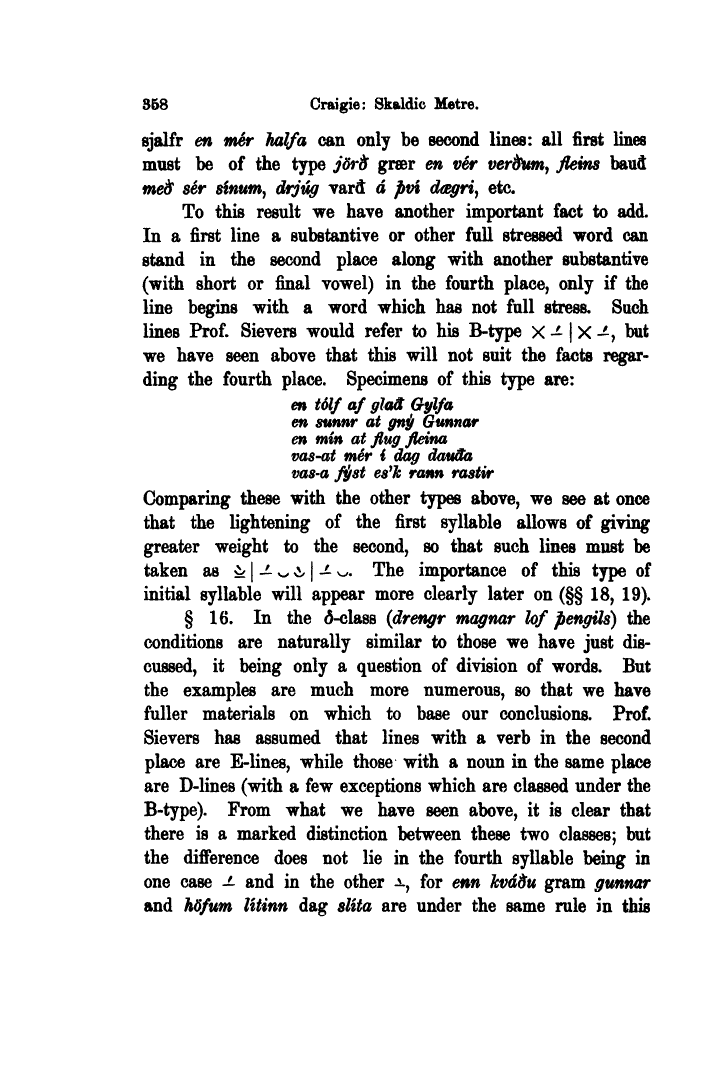
Full resolution (TIFF) - On this page / på denna sida - Sidor ...

<< prev. page << föreg. sida << >> nästa sida >> next page >>
Below is the raw OCR text
from the above scanned image.
Do you see an error? Proofread the page now!
Här nedan syns maskintolkade texten från faksimilbilden ovan.
Ser du något fel? Korrekturläs sidan nu!
This page has never been proofread. / Denna sida har aldrig korrekturlästs.
358
Craigie: Skaldic Metre.
sjalfr en met half a can only be second lines: all first lines
must be of the type jdrif grser en ver vertfum1 fieins baud
mecf ser sinum, drjug yard a pv% dcegri, etc.
To this result we have another important fact to add.
In a first line a substantive or other full stressed word can
stand in the second place along with another substantive
(with short or final vowel) in the fourth place, only if the
line begins with a word which has not full stress. Such
lines Prof. Sievers would refer to his B-type X + | X -^, but
we have seen above that this will not suit the facts
regarding the fourth place. Specimens of this type are:
m tolf af glad Gylfa
en sunnr at gny Gunnar
en min at flug fleina
vas-at mer i dag dauda
vas-a fi/st es’k rann rastir
Comparing these with the other types above, we see at once
that the lightening of the first syllable allows of giving
greater weight to the second, so that such lines must be
taken as ^ | J- ^ & \ -*- w. The importance of this type of
initial syllable will appear more clearly later on (§§ 18, 19).
§ 16. In the d-class (drengr magnar lof pengils) the
conditions are naturally similar to those we have just
discussed, it being only a question of division of words. But
the examples are much more numerous, so that we have
fuller materials on which to base our conclusions. Prof.
Sievers has assumed that lines with a verb in the second
place are E-lines, while those with a noun in the same place
are D-lines (with a few exceptions which are classed under the
B-type). From what we have seen above, it is clear that
there is a marked distinction between these two classes; but
the difference does not lie in the fourth syllable being in
one case -L and in the other -*-, for enn Jcvddu gram gunnar
and hofum Minn dag slita are under the same rule in this
<< prev. page << föreg. sida << >> nästa sida >> next page >>